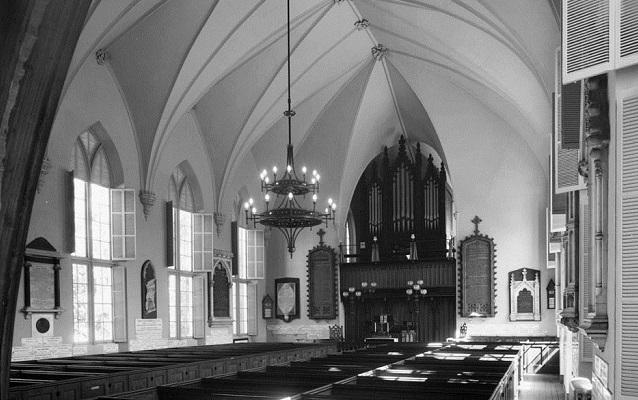Last updated: February 15, 2018
Place
French Huguenot Church

The French Huguenot Church, a National Historic Landmark, is the third church to be constructed on this site. Completed in 1845, it was the first Gothic Revival building constructed in Charleston, and is an excellent example of the versatility of local architect Edward Brickell White. White had recently completed very different Greek and Roman Doric buildings in Charleston. The stucco over brick Huguenot church is ornamented with windows, buttresses, and decorative details typical of the Gothic Revival. The use of iron for many of these decorative details was unusual, but reflects the difficulty of obtaining carved stonework during the antebellum period in Charleston. Today it remains unaltered, even the clear glass windows are original.
The first church of this denomination was built in 1687, but detonated in 1796 to create a fire break for a blaze raging through the neighborhood. A second church was built in 1800. Services were timed with the tides to accommodate those arriving by boat from the nearby plantations. In 1823, the church was closed due to declining membership.
Huguenot descendants revived the congregation in 1844 and the second church was torn down to make way for the current building. For most of the 20th century, the church was used for periodic services sponsored by the Huguenot Society of South Carolina, for organ recitals, and weddings. Today's active congregation, reestablished in 1983, is the only French Calvinist congregation in the United States.
